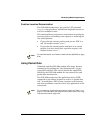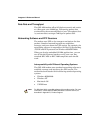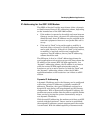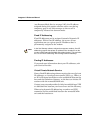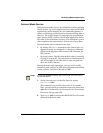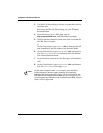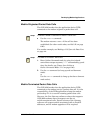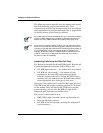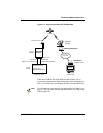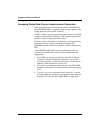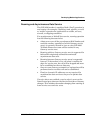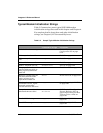
Developing Modem Applications
80-99208-1 Rev. D 5-29
• Your DTE application decides to answer the call by
asserting DP_DTR.
Different operating systems handle the DTR-DCD
handshake differently. To configure it appropriately, you can
use the
AT&D and AT&C commands.
For more information, see DTE Data Terminal Ready
Behavior (&D) on page 6-16 and DCE Received Line Signal
Detector Behavior (&C) on page 6-16.
Answering Calls Using the Data and Control Ports
If your DTE application is using both the Data and Control
ports, how the call is answered depends on whether DTR is
high (asserted) or low (de-asserted) on the two ports:
• DP_DTR asserted — the modem will auto-answer.
• DP_DTR de-asserted but CP_DTR asserted — the modem
will not auto-answer, but your DTE application can
decide whether to monitor RI and answer calls by raising
DP_DTR. On an incoming call, the modem asserts RI on
the Data port and displays RING to the Control port.
In this scenario, keeping DTR high on the Control port
powers the modem, while allowing you to leave DP_DTR low
to prevent auto-answering.
Roaming and Packet Data Service
The GSP-1620 modem is capable of both “fixed” operation in
one location (for example, a building, tank, pipeline, or well)
or “mobile” operation for applications on trucks, rail cars,
aircraft, or shipping containers.
For packet data service, roaming operation has the following
characteristics:
• Roaming within a Gateway service area can keep the PPP
session up the entire time, using dormant mode.
• Roaming between Gateway service areas is supported.
However, there is no hard hand-off capability between



